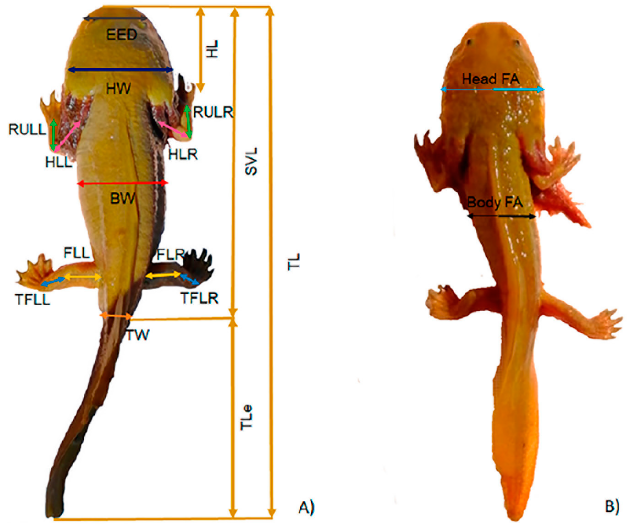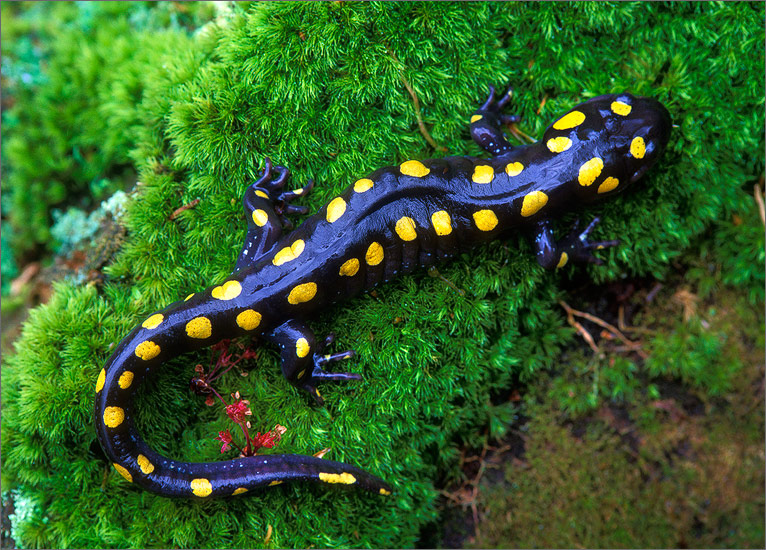Herpetology Species to Know
1/23
Earn XP
Description and Tags
Class Amphibia | Order Caudata | Family Ambystomatidae, Amphiumidae, Plethodontidae, Proteidae, Salamandridae, & Sirenidae
Name | Mastery | Learn | Test | Matching | Spaced |
|---|
No study sessions yet.
24 Terms
Ambystoma dumerilii (Lake Patzcuaro Salamander)

A species of mole salamander found in Lake Pátzcuaro, Mexico
A neotenic salamander, which means it retains juvenile characteristics throughout its life
The only member of its genus to have webbed feet as an adult

Ambystoma gracile (Northwestern Salamander)

A species of mole salamander found in the Pacific Northwest of North America.
It exhibits various color patterns and is often found in moist, forested habitats.
Large parotoid glands
Some populations can remain in an aquatic, neotenic state, retaining gills
Ambystoma maculatum (Spotted Salamander)

A species of mole salamander found in eastern North America is characterized by its yellow or white spots on a dark background. It breeds in temporary ponds and is often seen in early spring.
Spotted salamanders are typically 6–10 inches long, with females being larger than males
Larvae are about half an inch long and have external gills
Their undersides are light gray or light blue
Ambystoma mavortium (Barred Tiger Salamander)

A species of mole salamander found in North America, known for its striking yellow or white bars on a dark background. It inhabits grasslands and is often associated with temporary ponds for breeding.
The barred tiger salamander can grow 8–10 inches long and exhibit a wide range of color variations. It is primarily nocturnal and feeds on small invertebrates and may eat other salamanders.
Breeding: They breed in early spring after heavy rain
Eggs: Females lay eggs in small clusters on underwater plants
Larvae: Larvae are legless and have large external gills
Metamorphosis: They metamorphose into adults after 2–5 months
Ambystoma talpoideum (Mole Salamander)

Short, stocky body, large head, and small tail. It is typically gray or brown, with light flecks and a dark stripe on its belly.
This species is found in the eastern United States and is often associated with moist habitats. Mole salamanders breed in temporary ponds and exhibit a neotenic life stage.
Mole salamanders spend most of their time underground or under objects like rocks and logs
Belly: The belly is usually gray to olive brown without markings
Costal grooves: There are 10 or 11 riblike costal grooves
Ambystoma texanum (Small-mouthed Salamander)

Small head, short snout, and stocky body. It's a medium-sized salamander that's usually dark gray to black, with light gray speckles.
Small-mouthed salamanders have 13–15 costal grooves, which are vertical grooves on the sides of their bodies
The head often looks swollen behind the eyes, and the lower jaw barely protrudes beyond the upper jaw when viewed in profile.
Small-mouthed salamanders are secretive and spend most of their time hidden underground, under logs, or leaf litter
They are active at night
They breed in early spring, often when it's still cold and icy
They deposit their eggs in masses of 6–30 in standing water
Ambystoma tigrinum (Eastern Tiger Salamander)